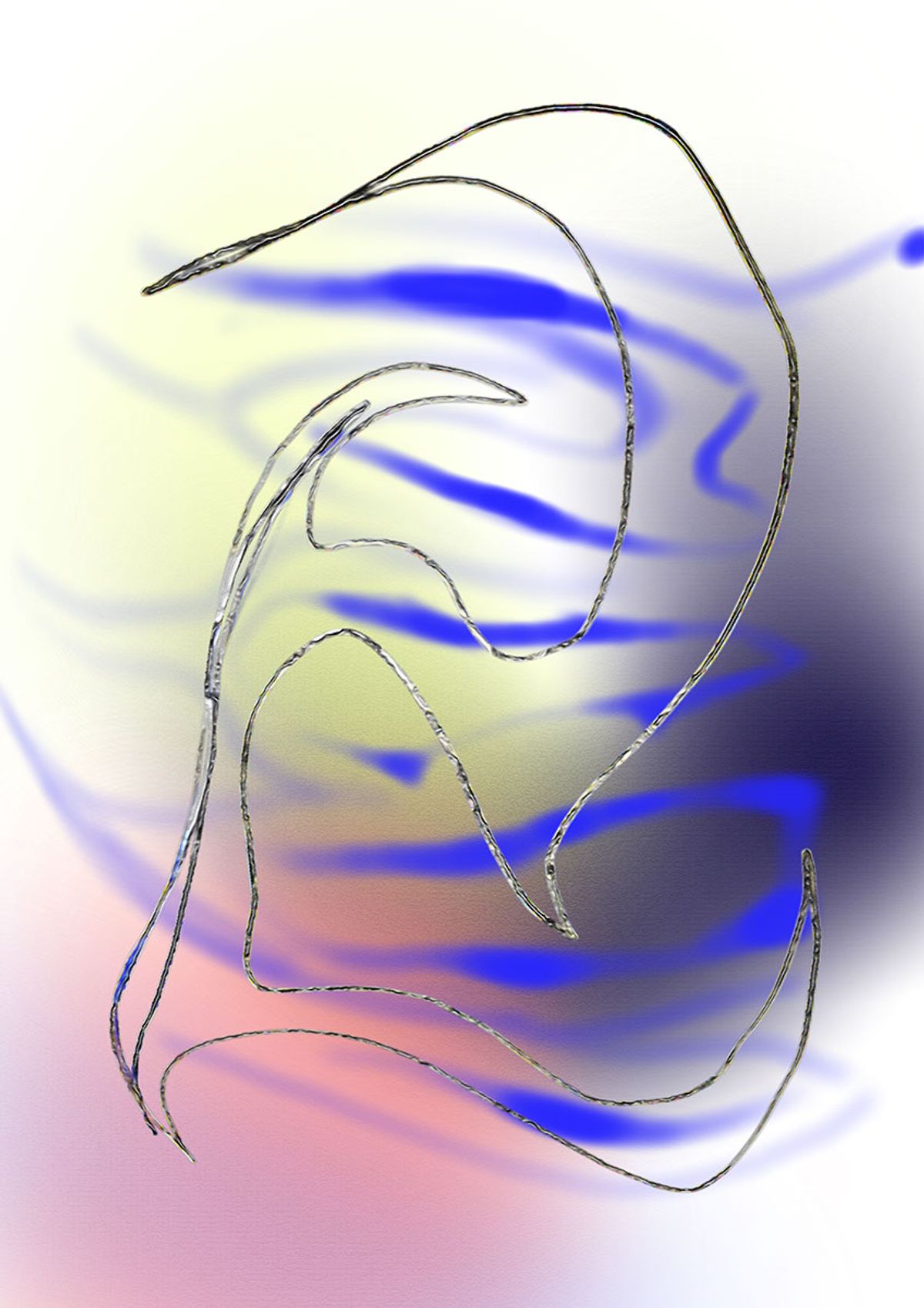The Art Exchange, a company that specialises in the tokenisation of art, has launched a contemporary art marketplace that trades specifically in NFTs.
The pilot project features a series of nine digital paintings by the multimedia artist Anna Taganzeva-Kobzeva. The works went on sale on Tuesday 15 June, with a price of €800 (968 DAI stablecoins) each. Four have so far been sold.
The young artist, from St Petersburg, Russia, has previously had a solo exhibition (supported by the Austrian Cultural Forum) and participated in the Moscow International Biennale for Young Art and the project 20:20. Time Has Stood Still, both at the Moscow Museum of Modern Art. In 2020, she won the Digital Dreams competition, supported by the Qatari government's Cultural Creative Agency. Taganzeva-Kobzeva has developed her own artistic language, which draws on hieroglyphs, runes, cuneiform and Nabatean script, transforming the symbols using the latest technologies. In her works, occultism and modern science, esotericism and philosophy, archaic and technogenic components collide and are creatively recycled.
The Art Exchange platform was conceived and implemented by us as a tool contributing to the democratisation of the art market—a point where the elite and the public intersectInna Bazhenova, founder, The Art Exchange
The Art Exchange plans to release new works by Russian and international artists on a weekly basis throughout the summer. Through a simple purchasing process, any work can be bought directly, either in euros with a bank card or via the DAI stablecoin, which is linked to the US dollar. The platform is available in Russian, English and Chinese.
Anna Leven, The Art Exchange's project manager, underlines that the marketplace is not a competitor to platforms such as Rarible. Rather, its main difference in producing and selling NFTs is its strict curatorial selection. "It's more important for us to pay attention to each artist, explain the potential of the technology and help them realise concepts they couldn't or didn't know how to do before," Leven says.
What also makes The Art Exchange platform different is that it uses two types of art tokenisation: unique (NFT) and interchangeable. While interchangeable tokens enable collective ownership of a work (allocating shares via blockchain and selling to multiple buyers), the possibilities of non-interchangeable NFTs are not limited to digital sales; they can also be used to confirm the provenance, authenticity and uniqueness of a work.
Founders Inna Bazhenova and Andrey Belyakov describe the main aim of The Art Exchange platform as the popularisation of digital art for mass consumption. "The Art Exchange platform was conceived and implemented by us as a tool contributing to the democratisation of the art market—a point where the elite and the public intersect. We offer a wide audience the opportunity to buy masterpieces of world art," says Bazhenova, who is also the publisher of The Art Newspaper and the founder of the IN ARTIBUS Foundation..
"The NFT project is logically connected to our core business. The Art Exchange has long had a technological base that is consistent with NFTs. The tools have to work; we can't neglect such a wonderful experimental venture.
Belyakov, a derivatives trader, entrepreneur and private venture investor, admits that the sale of NFTs is a form of curtain raiser for The Art Exchange's main product: the tokenisation of art, which will be launching soon.
"The ultimate goal of The Art Exchange is to connect classical art markets, technology and financial instruments," Belyakov says.



